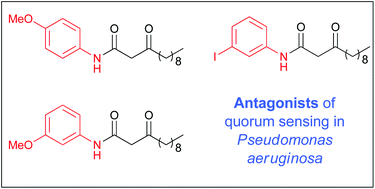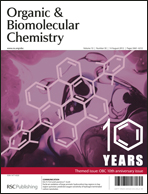Design, synthesis and biological evaluation of non-natural modulators of quorum sensing in Pseudomonas aeruginosa†‡
Abstract
Many species of bacteria employ a mechanism of intercellular communication known as quorum sensing which is mediated by small diffusible

- This article is part of the themed collection: Organic & Biomolecular Chemistry 10th Anniversary

 Please wait while we load your content...
Please wait while we load your content...